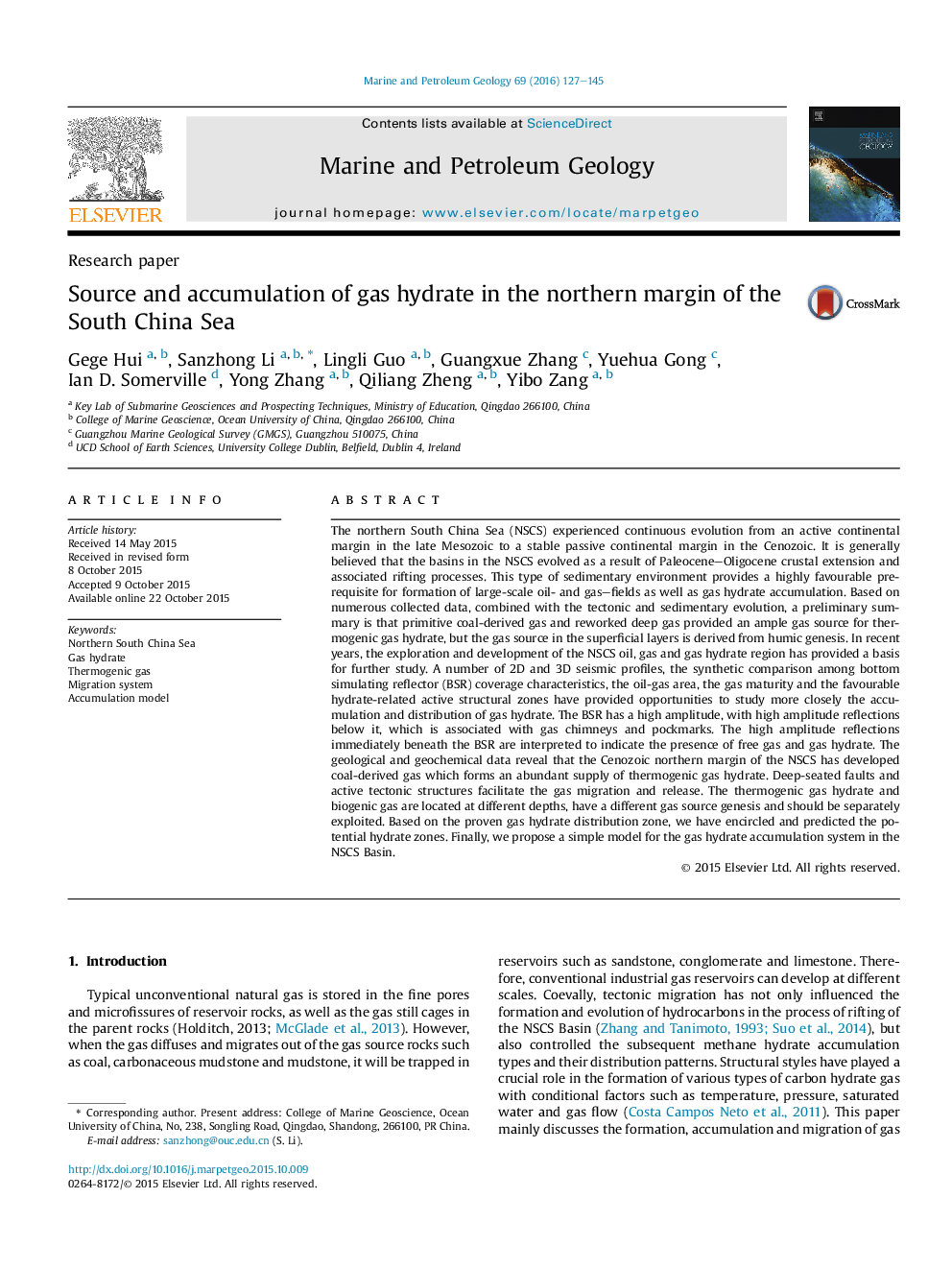| کد مقاله | کد نشریه | سال انتشار | مقاله انگلیسی | نسخه تمام متن |
|---|---|---|---|---|
| 4695470 | 1637158 | 2016 | 19 صفحه PDF | دانلود رایگان |
• Gas hydrate potential production may be more in the high heat flow value basins.
• Active tectonics structures are quite indicative in Gas hydrate exploitation.
• Gas source comes from the Tertiary thermogenic, biogenic gas as well as mantle CO2.
• Deep-seated tectonics controlled the accumulation patterns and reservoir types.
The northern South China Sea (NSCS) experienced continuous evolution from an active continental margin in the late Mesozoic to a stable passive continental margin in the Cenozoic. It is generally believed that the basins in the NSCS evolved as a result of Paleocene–Oligocene crustal extension and associated rifting processes. This type of sedimentary environment provides a highly favourable prerequisite for formation of large-scale oil- and gas–fields as well as gas hydrate accumulation. Based on numerous collected data, combined with the tectonic and sedimentary evolution, a preliminary summary is that primitive coal-derived gas and reworked deep gas provided an ample gas source for thermogenic gas hydrate, but the gas source in the superficial layers is derived from humic genesis. In recent years, the exploration and development of the NSCS oil, gas and gas hydrate region has provided a basis for further study. A number of 2D and 3D seismic profiles, the synthetic comparison among bottom simulating reflector (BSR) coverage characteristics, the oil-gas area, the gas maturity and the favourable hydrate-related active structural zones have provided opportunities to study more closely the accumulation and distribution of gas hydrate. The BSR has a high amplitude, with high amplitude reflections below it, which is associated with gas chimneys and pockmarks. The high amplitude reflections immediately beneath the BSR are interpreted to indicate the presence of free gas and gas hydrate. The geological and geochemical data reveal that the Cenozoic northern margin of the NSCS has developed coal-derived gas which forms an abundant supply of thermogenic gas hydrate. Deep-seated faults and active tectonic structures facilitate the gas migration and release. The thermogenic gas hydrate and biogenic gas are located at different depths, have a different gas source genesis and should be separately exploited. Based on the proven gas hydrate distribution zone, we have encircled and predicted the potential hydrate zones. Finally, we propose a simple model for the gas hydrate accumulation system in the NSCS Basin.
Journal: Marine and Petroleum Geology - Volume 69, January 2016, Pages 127–145
